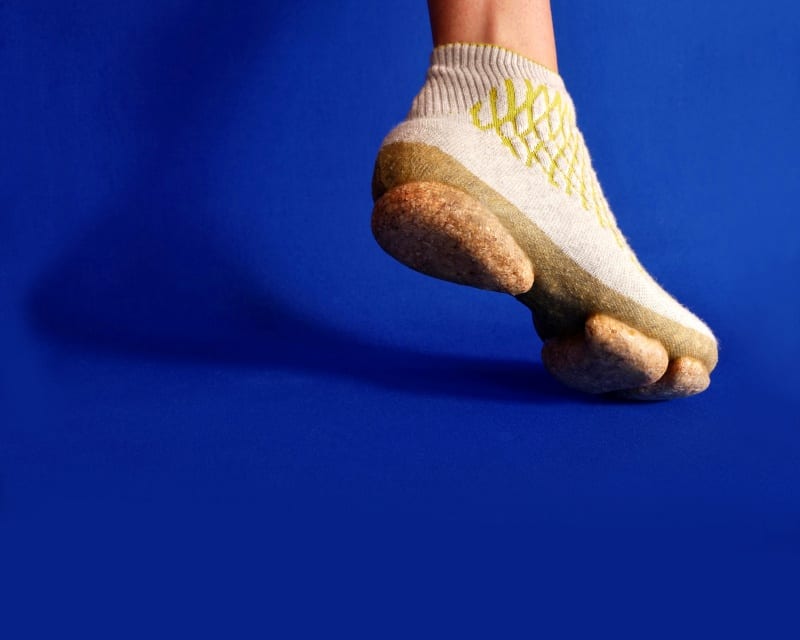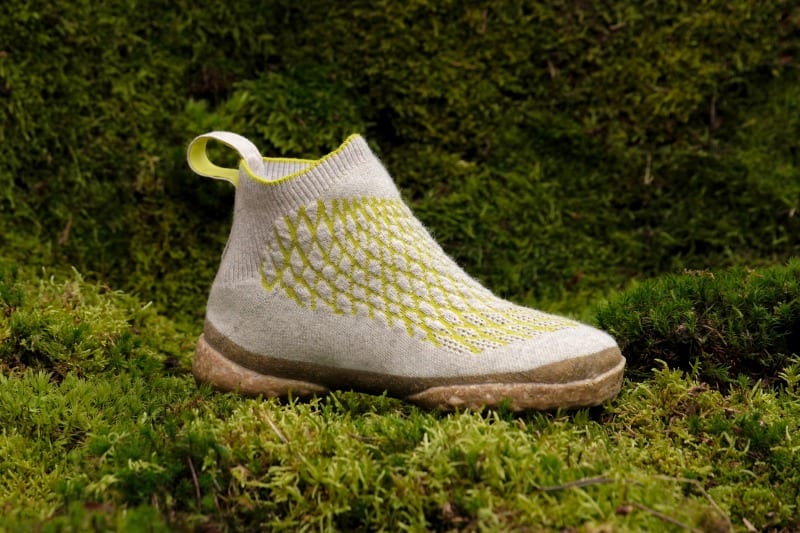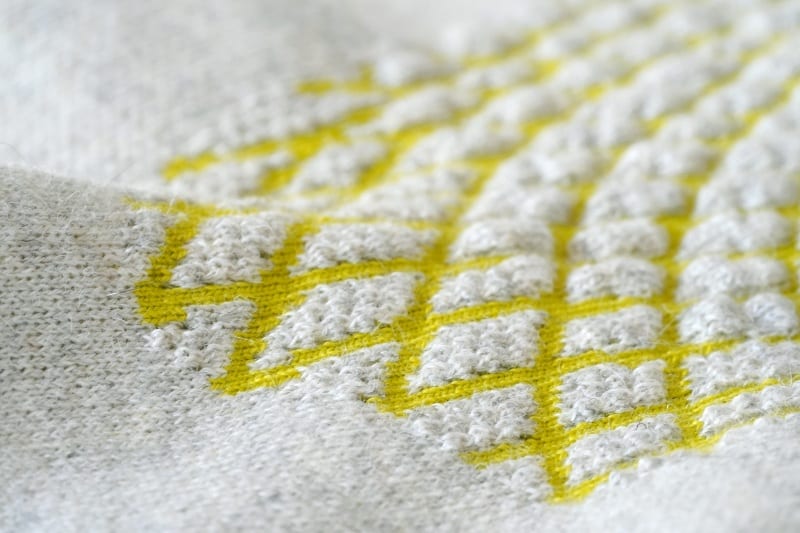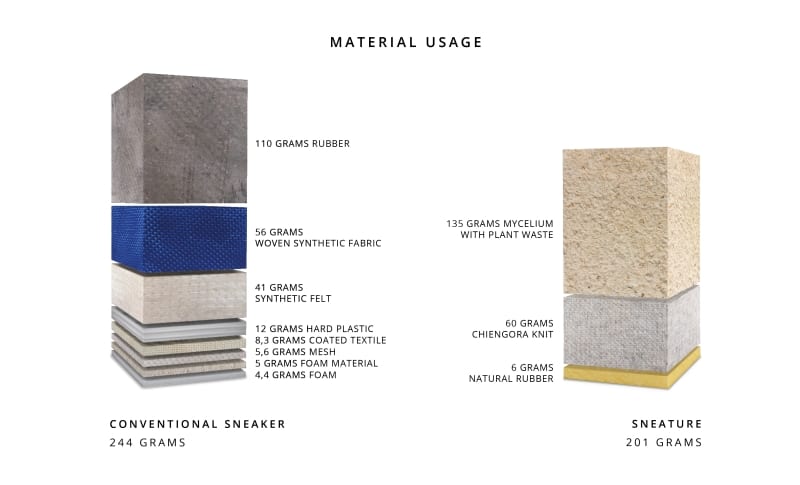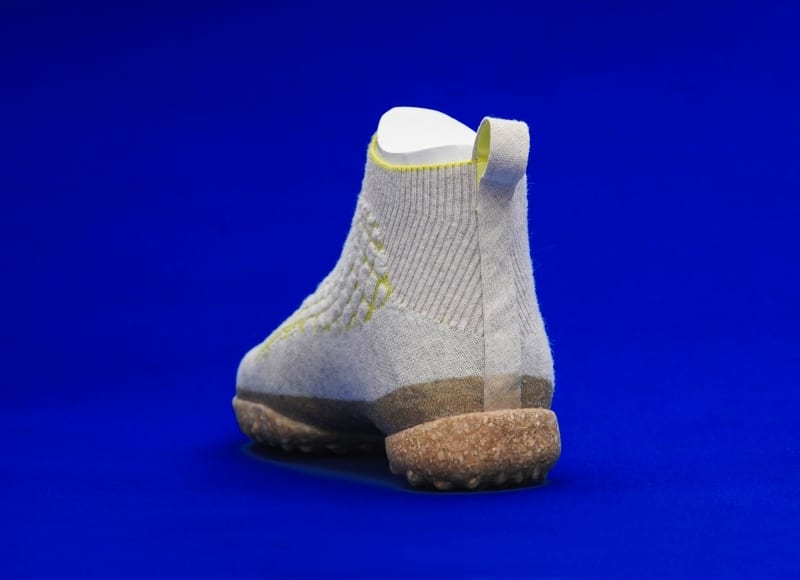Sneakers Made from Knitted Dog Hair
Sneature developed by German designer Emilie Burfeind is socks sneakers made of waste that is completely biodegradable.
Imagine wearing a sneaker that fits your feet like a sock, is made from the hair shed by your dog, and is completely biodegradable? Well, that is a reality, thanks to Emilie Burfeind, an alumnus of the University of Art and Design Offenbach am Main, Germany, who has developed a sock sneaker with a mushroom mycelium sole and a knitted upper made from canine hair shed while grooming and would otherwise have been discarded.
The yarn made of dog hair, also called Chiengora, is an innovative solution for the upcycling of protein-based waste materials. The design integrates both functional requirements of a trainer and individual customisation by the user. The integration of the 3D knitting technology enables both individualisation and on-demand production with the lowest possible energy consumption. After use, Sneature can be discarded as it is completely biodegradable, explains the designer.
“Sneature is the sustainable design project of a sneaker,” says Emilie, “In order to approach the problem and conceptualise a solution, a fundamental factor for the ecological properties of every product – the material was examined. The design is based on a series of material experiments with natural raw fibres.”
Emilie wanted to simplify the entire process of shoe-making while using as few variables in materials as possible. The complicated construction of a sneaker and the use of different materials (rubber, textile, various plastics, etc.) make it almost impossible and unprofitable to disassemble and recycle a pair of trainers after use. And it was this complexity that Emilie wanted to avoid.
The focus for the design of this new product was on the use of natural, renewable raw materials, the integration of functional requirements for a shoe, the possibility of individual customisation to the user, on-demand production with the lowest possible energy consumption, and biodegradability of the products after their use, according to the designer.
The membrane is a protein-based 3D knit that transports the functional properties of flexibility, stiffness, and air circulation in a “second skin”. The natural properties of the material also provide water absorption and release and anti-static properties. The membrane is manufactured in a knitting lab.
The trainer has no laces and largely consists of one seamless sock, made from dog hair that was crowdsourced from dog owners by Berlin start-up Modus Intarsia.
This hair is spun into a high-quality yarn known as Chiengora, which is 42% better at retaining heat than sheep’s wool and was historically used by indigenous societies on America’s West Coast.
The transition from the membrane to the sole is formed by a thin layer of flexible bio-rubber/ bioplastic. The junction area is water-repellent against splashing water or moisture from below and also protects the membrane in areas that quickly wear out. As the area is designed to be made of bioplastics, this material can be produced at home or in a maker‘s lab in the same way as DIY materials.
The sole is attached to the transition area and serves as a cushion and protection against rapid abrasion of all other areas in order to extend the lifespan of the product. The sole is made of mushroom mycelium cultivated in a mould, which can be produced at home or in a makerlab.
All pictures Courtesy Emilie Burfeind.


